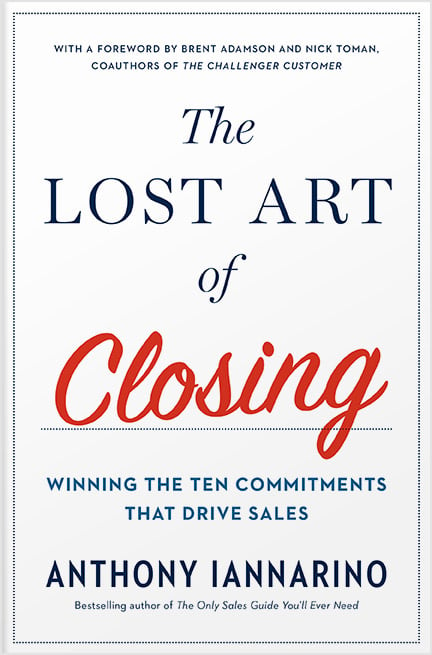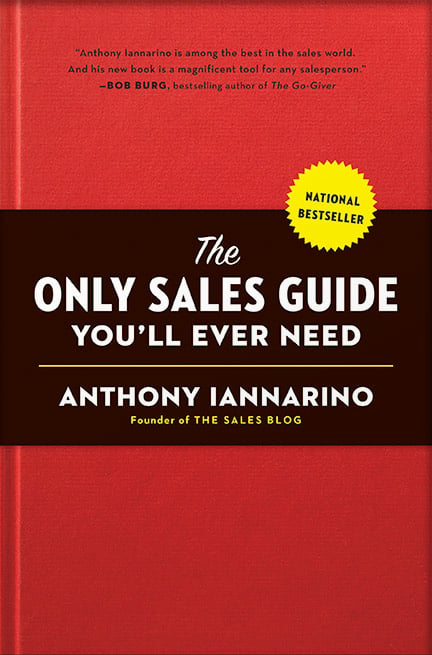The Gist:
- The legacy approaches to sales are inadequate for today’s environment.
- Your prospective clients measure you by how much value you create for them in a number of areas.
- One way to improve your approach is to remove the crutches you have used to sell.
To make a point about where we are today in B2B sales, let’s try a thought experiment. Here is the scenario:
You are meeting with your prospective client. You have successfully sold to companies in the same industry vertical, and you have a record of helping them improve their results. However, to gain this meeting, you had to agree to follow a list of rules your prospective client provided. If you violate any of them, your client will immediately escort you out of the building.
Here are the rules you are required to follow:
- You are not permitted to say anything about your company, including your company’s name or anything that might allow your contact to recognize your employer.
- You are not allowed to mention or refer to any other company, including your existing clients.
- You may not mention your product, service, or your solutions. Nor are you allowed to speak about the better results you have provided your clients, including any statements they might have made.
- You may not try to develop any personal rapport with the contact, including asking questions about their personal life.
- Above all, you may not ask your client any questions designed to elicit their “dissatisfaction,” their “pain points,” or their “hot buttons.”
At the twenty-five-minute mark of your meeting, your contact will decide your fate: either you will be allowed to schedule another appointment, or your contact will end the conversation without making any future commitments. The single factor your contact is allowed to consider is how valuable they found the conversation.


How Will You Open the Call?
Let’s look at the challenges these rules present. The first obstacle is how best to open a conversation when you cannot say anything about your company or the client companies you serve. This is a real problem if you rely on your company to create credibility. It’s also a problem for those who depend on their fast rapport skills to connect with their contacts.
These rules also present difficulty if you are used to opening the call with a solution-focused agenda. What’s especially difficult is the inability to ask your prospective client about their problems.
What Is the Content of the Conversation?
Your contact’s rules eliminate any conversation about your company, your clients, your solutions, rapport-building, or the problems your prospective client might be experiencing. Your discussion needs to consume twenty-five minutes in total, more than you might believe you need under these rules but fewer than you have in an average sales call.
Your contact will judge you only on how much value you created for them. What are you going to talk about that doesn’t violate these rules? What do you consider “value” that lies outside of the prohibited topics? How do you know what your contact will recognize as valuable enough to command the next meeting?


A Short Explanation
The conversations we have with clients have moved on from the items that are contraband in this thought experiment. You can’t try to smuggle in elements that you are comfortable with, so you must look elsewhere for a way to use your contact’s time wisely. You might believe that being the one-hundred and eleventh person to ask your connection a series of questions designed to uncover a problem is valuable to them, but you would be wrong.
The conversations that move your clients to action are levels above anything on the list of prohibited topics. Your clients will find them more valuable, whether or not they ever buy from you. How do you want your client to perceive you and the value you create?
One Answer Key to This Thought Experiment
Some readers will recognize that their sales conversations would fall within the rules. Others would find this scenario to be incredibly challenging. The greater a challenge you see, the more certain you are using a legacy approach to selling.
It would be cruel to leave you here without some direction on solving this puzzle. One of my strongest beliefs is that there are many ways to get to yes, and this problem is no different. Here is one way to pass the test.
The Opening
You might open the conversation with something like, “Thank you for meeting with me. Would it be okay if I started by providing you a short executive briefing on some of the trends that we believe will have the greatest impact on your industry over the next twelve to eighteen months?” At the end of the executive briefing, you might share the implications of these trends and how they could harm a company’s results (without mentioning their name or your relationship).
Nothing in this opening violates any of the rules in the thought experiment. Instead of establishing credibility by relying on our company, our success with other clients, or our solutions, we pursue relevance by providing a conversation about what should concern the contact.
There is a difference between explaining to your client why they have—or soon will have—challenges and asking them to disclose a problem so you can insert your solution. In one strategy, you are teaching; in the other, your client recognizes you as just another salesperson who asks the same set of questions all of your peers have asked them.


The Middle Game
While the rules forbid asking questions designed to elicit the client’s pain point, they do not prohibit asking other questions. After your opening presentation, you might ask, “What is your perspective on these trends as they pertain to your future results, and which trend do you believe presents the greatest challenge for your organization?” A good follow-up question might be something like, “What strategic initiatives have you already put in place to address these challenges, and what initiatives are you considering to protect your company from negative consequences in the next twelve months?”
Questions that you ask to gain information are necessary, crucial, and helpful to you. However, they don’t create a great deal of value for your contacts, as they learn nothing. Eliciting your client’s perspective on the impact of things that could harm their business opens up a conversation around change. Likewise, the question about what the client has already done to address the trends helps them learn something about themselves, including what changes they are willing to make.
The End Game
Remember, we only have twenty-five minutes. But it takes less than one of those minutes to ask for a second meeting, to explore some of the decisions the client might need to make and some of the factors they might need to consider.
Do Good Work:
- Work to discover which conversations create value for your clients.
- Become the expert in factors that cause your prospective clients to experience poor results and learn to explain the root cause of their problems.
- Give your prospective client an experience that is different than anything will get from your competitors.

Essential Reading!
Get my first book: The Only Sale Guide You'll Ever Need
"The USA Today bestseller by the star sales speaker and author of The Sales Blog that reveals how all salespeople can attain huge sales success through strategies backed by extensive research and experience."
Buy Now







.jpg?width=768&height=994&name=salescall-planner-ebook-v3-1-cover%20(1).jpg)


